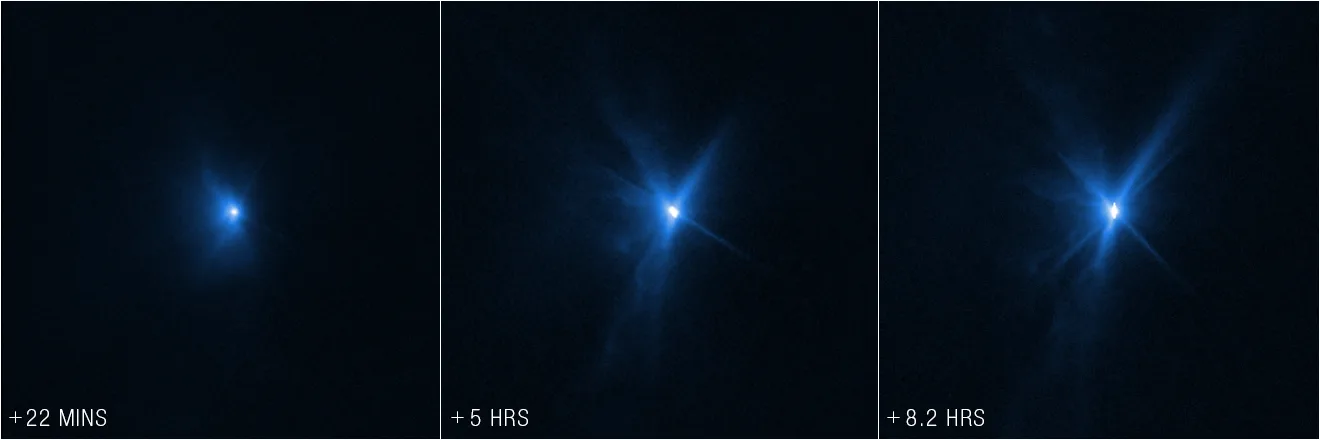James Webb and Hubble telescope images capture DART asteroid collision
made history this week after an attempt to slam its DART (Double Asteroid Redirection Test) spacecraft into an asteroid nearly 7 million miles away . While NASA shared some close-up images of the impact, it observed the planetary defense test from afar as well, thanks to the help of the James Webb and Hubble space telescopes. On the surface, the images aren't exactly the most striking things we've seen from either telescope, but they could help reveal a lot of valuable information.
This was the first time that Hubble and JSWT have observed the same celestial target simultaneously. While that was a milestone for the telescopes in itself, NASA suggests the data they captured will help researchers learn more about the history and makeup of the solar system. They'll be able to use the information to learn about the surface of Dimorphos (the asteroid in question), how much material was ejected after DART crashed into it and how fast that material was traveling.
JWST and Hubble picked up different wavelengths of light (infrared and visible, respectively). NASA says that being able to observe data from multiple wavelengths will help scientists figure out if big chunks of material left Dimorphos' surface or if it was mostly fine dust. This is an important aspect of the test, as the data can help researchers figure out if crashing spacecraft into an asteroid can change its orbit. The ultimate aim is to develop a system that can .
NASA says that JWST picked up images of “a tight, compact core, with plumes of material appearing as wisps streaming away from the center of where the impact took place.” JWST, which captured 10 images over five hours, will continue to collect spectroscopic data from the asteroid system in the coming months to help researchers better understand the chemical composition of Dimorphos. NASA shared a timelapse GIF of the images that JWST captured.

NASA/ESA/CSA/Cristina Thomas (Northern Arizona University)/Ian Wong (NASA-GSFC)/Joseph DePasquale (STScI)
At around 14,000 MPH, Dimorphos was traveling at a speed over three times faster than JWST was originally designed to track. However, the telescope's flight operations, planning and science teams were able to develop a way to capture the impact.
As for Hubble, the 32-year-old telescope's Wide Field Camera 3 captured its own images of the collision. “Ejecta from the impact appear as rays stretching out from the body of the asteroid,” according to NASA. The agency noted that some of the rays appear curved, and astronomers will have to examine the data to gain a better understanding of what that may mean.

NASA/ESA/Jian-Yang Li (PSI)/Alyssa Pagan (STScI)
According to their initial findings, though, the brightness of the asteroid system increased threefold after impact. That level of brightness stayed the same for at least eight hours. Hubble captured 45 images immediately before and after DART's impact. It will observe the asteroid system 10 additional times over the next few weeks.
for DART, which is about the size of a vending machine, to reach Dimorphos. The football stadium-sized asteroid was around 6.8 million miles away from Earth when DART rammed into it. Pulling off an experiment like that is no mean feat. The learnings scientists gain from the test may prove invaluable.
Tất cả các sản phẩm do Engadget đề xuất đều được lựa chọn bởi nhóm biên tập của chúng tôi, độc lập với công ty mẹ của chúng tôi. Một số câu chuyện của chúng tôi bao gồm các liên kết liên kết. Nếu bạn mua thứ gì đó thông qua một trong những liên kết này, chúng tôi có thể kiếm được hoa hồng liên kết. Tất cả giá đều chính xác tại thời điểm xuất bản.

